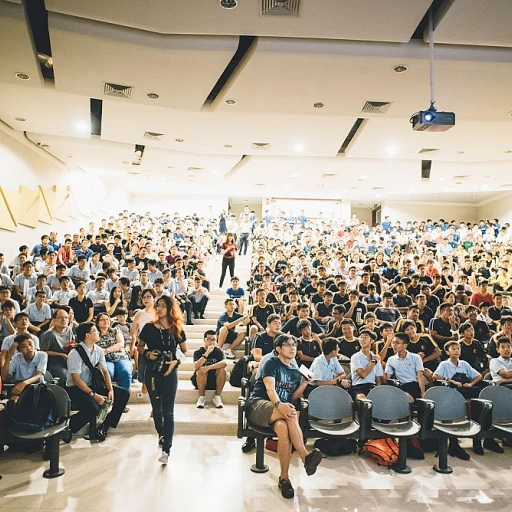
Defining Temp-to-Hire Positions
Clarifying the Concept of Temp-to-Hire Positions
In the realm of staffing, the term "temp-to-hire" often surfaces as a viable solution for both employers and job seekers looking for flexibility and potential long-term employment. Essentially, temp-to-hire positions start off as temporary roles, with the possibility of becoming permanent, full-time employment based on performance and business needs. This type of staffing bridges the gap between temporary staffing and direct hire, offering a comprehensive way to evaluate potential permanent employees without immediate long-term commitment.
Temp-to-hire roles are facilitated mainly by staffing agencies or managed service providers (MSPs). These organizations play a crucial role not only in sourcing and vetting temporary workers but also in offering a structured path towards permanent employment. In this setup, a company can "test the waters" with a worker in a temporary job before deciding to hire them permanently. As discussed in this insightful piece on MSP staffing techniques, temp-to-hire arrangements can be particularly beneficial in dynamic industries where staffing needs fluctuate often.
Benefits for Employers
Benefits Employers Gain by Using Temp-to-Hire Positions
The temp-to-hire model in staffing offers numerous advantages to companies looking to navigate the complex terrain of temporary and permanent employment landscapes. This approach provides a strategic solution for businesses that need to evaluate potential employees in real work environments before making a long-term commitment. Here are a few key benefits for employers:- Flexibility in Workforce Planning: Companies can address their immediate staffing needs with temporary workers, allowing for adjustments in their workforce according to market demands and project requirements without the commitment of a direct hire.
- Lower Risk of Hiring Errors: By initially onboarding temp workers, employers have the opportunity to assess candidates' skills, cultural fit, and work ethic over time. This reduces the risk of hiring permanently for a position that may not be suitable.
- Cost-Effective Staffing Solutions: Temp-to-hire arrangements enable companies to reduce costs associated with recruitment and turnover, as temporary staffing agencies handle initial hiring efforts, often covering expenses related to training and benefits until a direct hire is made.
- Access to a Broader Talent Pool: Engaging with temp agencies broadens the potential candidate pool, as temporary workers are specifically tailored to meet the job's requirements, targeting skilled individuals who might not be available otherwise.
- Enhanced Evaluation Period: Employers benefit from the extended period to evaluate a temporary employee’s performance and compatibility with the company’s objectives, facilitating informed decisions regarding their transition to a permanent role.
Advantages for Job Seekers
Job Seekers: Gaining from Temp-to-Hire Opportunities
Temp-to-hire positions offer a unique pathway for job seekers to transition from temporary work to full time employment. These positions are part of the broader employment strategy within the gig economy, allowing individuals to gain critical work experience while exploring long term opportunities. One significant advantage for job seekers is the ability to 'test the waters'. Candidates can evaluate whether a company aligns with their career goals and personal work style before committing to a permanent role. This flexibility is particularly beneficial in a competitive job market where the fit between employee and employer is crucial for long-term job satisfaction. Temp-to-hire positions also enable job seekers to build and diversify their skill set. By working in temporary staffing roles, individuals can acquire diverse experiences across different projects or departments, ultimately enhancing their professional profile. This experience can prove invaluable when vying for permanent roles, as employers often look for adaptable workers with a range of capabilities. Additionally, temp-to-hire roles can serve as an effective stepping stone for those seeking direct hire into their desired positions. As companies increasingly rely on staffing agencies or temp staffing solutions to meet their needs, these roles provide a vital foot in the door. Job seekers who perform well in temp positions are often considered for permanent placements by their employers. It's also worthwhile mentioning the potential for networking opportunities within temporary employment. Interacting with different teams and departments can lead to meaningful connections and recommendations, which can be an asset for future hire jobs. For job seekers interested in discovering more about navigating the staffing landscape and temp hire opportunities, exploring staffing agencies in Asheboro can provide further insights into the local employment market.Challenges in Temp-to-Hire Arrangements
Overcoming Hurdles in Temporary to Permanent Transitions
While the transition from temporary to permanent employment offers various benefits, it presents some challenges that both employers and job seekers must navigate. Firstly, there is the issue of ensuring a good fit between the temporary worker and the company culture as not all temps easily adapt to new environments. This necessitates a close evaluation period during the temp hire stage.
Employers also face the challenge of developing effective communication channels with temporary employees. Clear and open lines of communication are vital to avoid misunderstandings about the expectations and responsibilities associated with the role, especially if the position might transition to a full-time job. Temporary workers often juggle multiple short-term assignments; thus, understanding their availability and long-term commitment is crucial.
Another hurdle is the potential for disruption in the workflow. Temp hiring can sometimes lead to gaps in productivity as temporary workers learn the ropes of the new position. For companies relying heavily on temp agencies, integrating temporary employees into permanent roles can require additional resources and time.
From the job seeker's perspective, temporary work can be uncertain, offering no guarantees of a permanent role. This uncertainty can discourage some from pursuing temp-to-hire opportunities, particularly those seeking security in full-time employment. Moreover, temporary workers may face challenges in securing benefits that typically accompany permanent roles, such as healthcare and retirement plans.
Ultimately, for both employers and workers, establishing a clear understanding of the expectations and potential growth opportunities can ease the transition from temporary work to permanent employment. Awareness and strategic management of these challenges can significantly enhance the experience in temp staffing arrangements and optimize the benefits it offers.
Role of MSPs in Facilitating Temp-to-Hire Positions
The Vital Role of MSPs in Temp-to-Hire Staffing
In the complex landscape of hiring, Managed Service Providers (MSPs) play a crucial role in streamlining the temp-to-hire process. MSPs are instrumental in bridging the gap between traditional staffing agencies and the organizations in need of temporary workers, ensuring a seamless transition from temporary employment to full-time positions.- Centralized Coordination: MSPs provide a significant advantage by bringing a centralized framework to staffing. This centralization allows companies to efficiently manage and track a multitude of temporary positions and workers, minimizing the risk of miscommunication and oversight.
- Expertise and Resources: Leveraging extensive industry knowledge, MSPs efficiently match job seekers with appropriate temp hire opportunities, enhancing the probability of a successful transition from a temporary role to a permanent position. They also provide support in handling the administrative intricacies involved in temporary staffing arrangements.
- Compliance and Risk Management: MSPs ensure that both businesses and staffing agencies adhere to labor laws and standards, reducing compliance risks associated with temporary employment.
- Technology Integrations: Many MSPs utilize advanced staffing technology solutions to facilitate smooth operations. These tools help in the effective tracking, reporting, and management of temporary staffing needs, allowing for data-driven decisions and improved recruitment strategies.
Future Trends in Temp-to-Hire Staffing
Emerging Trends in Temporary-to-Permanent Staffing
As we explore the evolving landscape of temporary-to-permanent positions, several trends highlight the future dynamics of this staffing approach. Understanding these trends can provide insights into how companies, job seekers, and staffing agencies might adapt to leverage opportunities effectively.- Integration with Technology: The role of technology in staffing is expanding, facilitating smoother transitions for temporary employees into full-time roles. Technology platforms are increasingly used by agencies to streamline processes, from managing applications to onboarding temporary workers. These platforms also enhance the evaluation processes, allowing employers to better track performance and fit for long-term employment.
- Rise of the Gig Economy: A significant shift is noticed with more workers expressing interest in short-term, flexible positions which eventually turn into permanent roles. The gig economy is influencing temporary staffing, offering workers a chance to explore various positions and decide where they fit best for full-time employment. This trend also offers companies a larger pool of talent to draw into their permanent workforce.
- Emphasis on Worker Experience: Companies are putting more effort into enhancing the temporary worker experience. Employees in temporary roles expect similar benefits and treatment as full-time workers, and improving their experience can increase retention rates. This includes offering comprehensive benefits packages, engagement initiatives, and professional development opportunities for temporary workers.
- Greater Workforce Flexibility: The demand for flexibility is not just from workers but employers as well. Temporary staffing is becoming a strategic approach for companies seeking to maintain agility in an uncertain market. Employers value the ability to adapt their workforce size quickly as business needs change, converting temp hires to full-time roles when the situation stabilizes.












